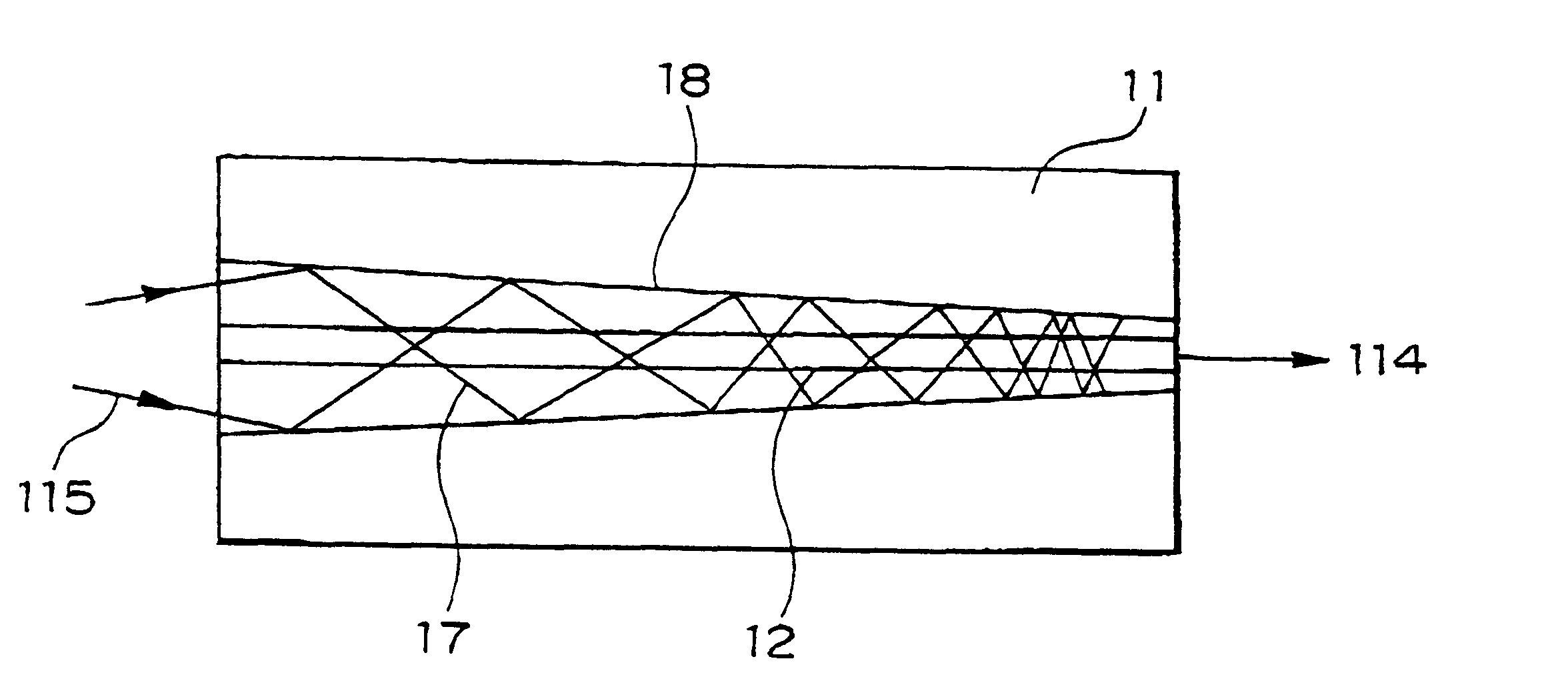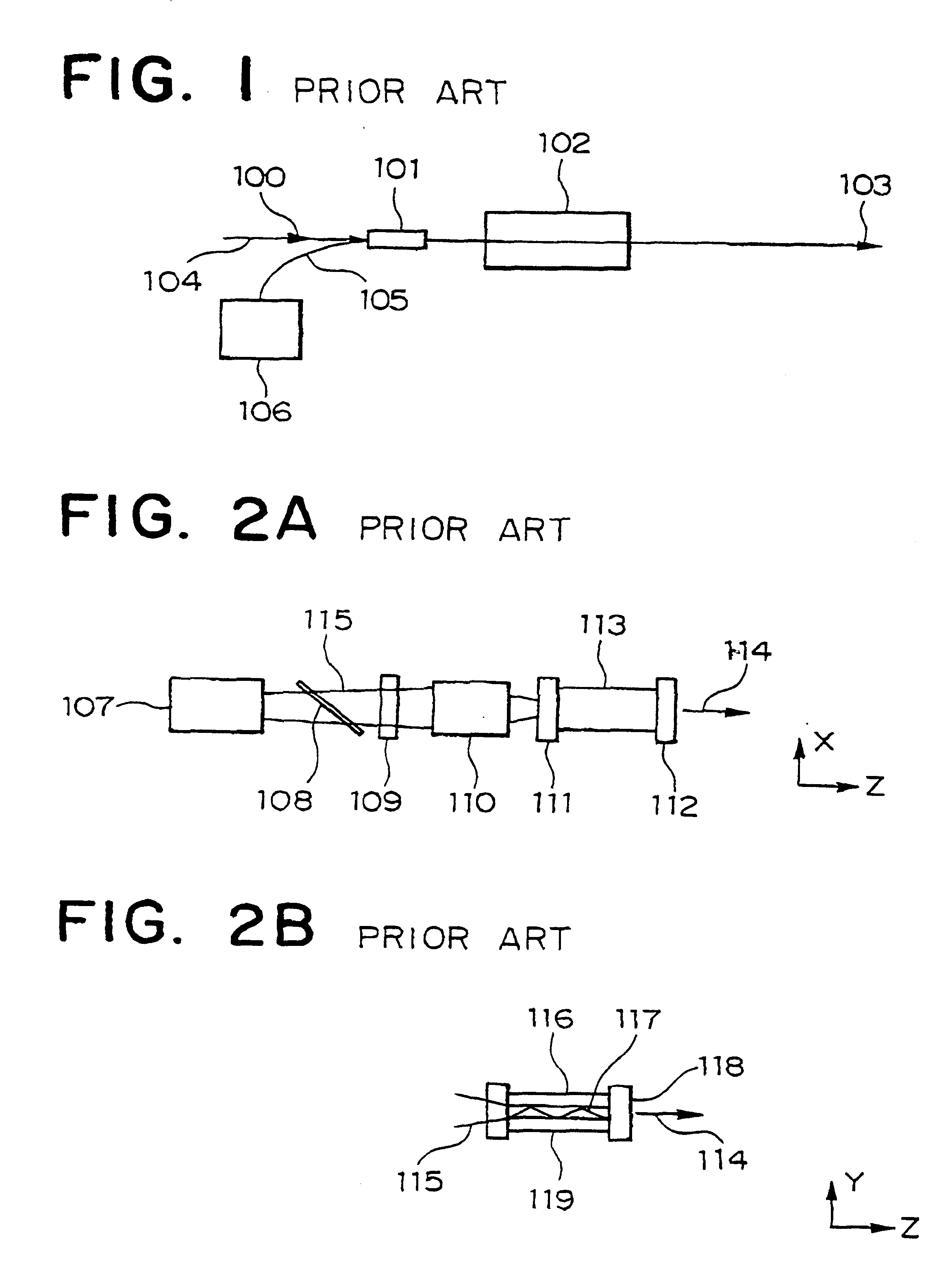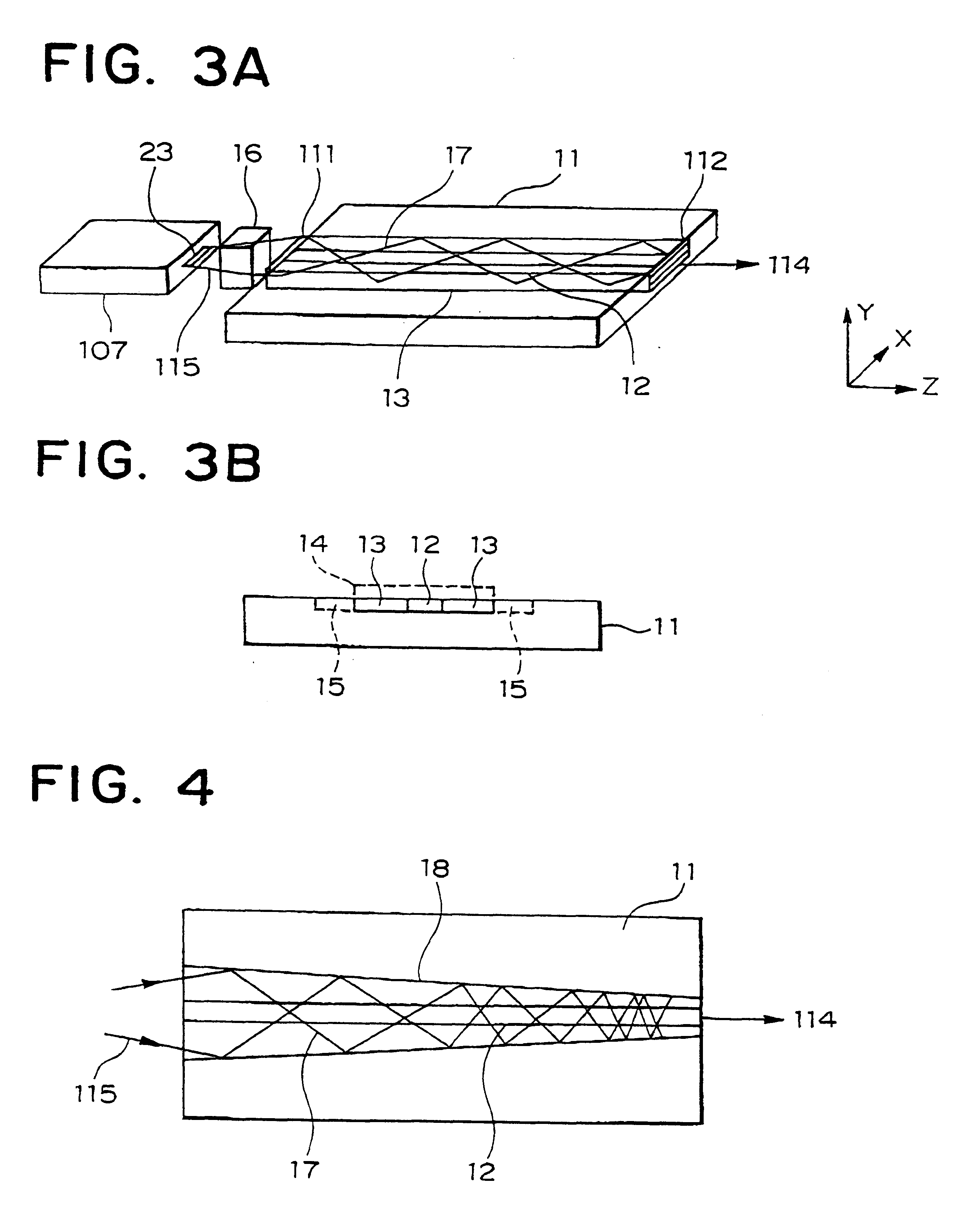Optical device
a technology of optical devices and optical bonding, which is applied in the direction of optical waveguide light guides, optical elements, instruments, etc., can solve the problems of reducing the efficiency of the device, reducing the horizontal mode quality, and unable to achieve the bonding efficiency of the single-mode waveguid
- Summary
- Abstract
- Description
- Claims
- Application Information
AI Technical Summary
Problems solved by technology
Method used
Image
Examples
first embodiment
Now, the present invention is more specifically described with reference to accompanying drawings in which description of similar elements to those of FIGS. 1, 2A and 2B is omitted by affixing the same numerals thereto.
A waveguide lasing apparatus shown in FIG. 3A includes a multi-mode semiconductor laser 107, an excitation optical system 16 and an external resonator. A width of an active layer (light generation layer) 23 is between 20 .mu.m and 500 .mu.m, desirably between 50 .mu.m and 200 .mu.m. This is because the width of the semiconductor laser light generating width is desirably narrower for bonding with a single-mode waveguide 12 and a width of the single-mode waveguide 12 of the external resonator is generally between 6 and 10 .mu.m, and some extent of the light generation width is required for the higher output.
The optical waveguide used in the external resonator includes the single-mode waveguide 12 and multi-mode waveguides 13 on an optical substrate (for example, made of...
second embodiment
In the present invention, a waveguide structure is not restricted to that of the first embodiment, and various structures of effectively absorbing an exciting ray can be employed.
As a second embodiment, a preferred example thereof will be described.
Referring to FIG. 4, a waveguide of the present embodiment different from that of the first embodiment shown in FIGS. 3A and 3B includes a tapered multi-mode waveguide 18 of which a width is reduced towards a propagation direction of an exciting ray. Since the propagating exciting ray 17 is confined in a narrower space in such a tapered structure, the absorption rate of the exciting ray in the propagation step can be made larger than that when the width of the waveguide is fixed. For example, when the width of the waveguide at the incident facet was 30 .mu.m and that at the output facet was about 15 .mu.m, an absorption rate was obtained at a waveguide length of 5.7 mm while a waveguide length of 7.5 mm was needed for obtaining a similar ...
third embodiment
A third embodiment exemplifies a waveguide laser having a higher output than that of the first embodiment
The waveguide laser of the present embodiment shown in FIG. 5 is different from that shown in FIGS. 3A and 3B in that a waveguide of an input side of a multi-mode waveguide 13 includes a plurality of multi-mode waveguides 21. Also in the respective multi-mode waveguides 21, an exciting ray propagates in a single-mode in a thickness direction and in a multi-mode in a width direction. These multi-mode waveguides 21 are combined to form a single waveguide by means of a wave adder 20.
The respective multi-mode semiconductor lasers 19 (excitation optical systems are not shown) are mounted on input facets of the multi-mode waveguides 21. In place of the multi-mode semiconductor lasers 19, a so-called "semiconductor laser bar" including light generating elements disposed in an array having a space among them three or four times larger than a light generation width can be used.
Similarly t...
PUM
 Login to View More
Login to View More Abstract
Description
Claims
Application Information
 Login to View More
Login to View More - R&D
- Intellectual Property
- Life Sciences
- Materials
- Tech Scout
- Unparalleled Data Quality
- Higher Quality Content
- 60% Fewer Hallucinations
Browse by: Latest US Patents, China's latest patents, Technical Efficacy Thesaurus, Application Domain, Technology Topic, Popular Technical Reports.
© 2025 PatSnap. All rights reserved.Legal|Privacy policy|Modern Slavery Act Transparency Statement|Sitemap|About US| Contact US: help@patsnap.com



